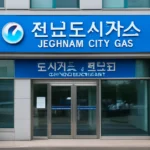City Gas, LNG, and LPG are essential components of the modern energy landscape, powering everything from homes to businesses. However, many consumers still struggle with understanding the nuances between these different gas types, their price variations, and how they impact daily life. This article will provide an in-depth exploration of City Gas LNG, LPG, and the differences between them. Whether you’re a homeowner looking for the most cost-effective option or simply curious about how each fuel type functions, this guide will provide clarity.
Are you confused about City Gas LNG and LPG? Learn about their differences, prices, and key features. Explore the impact of each on your energy consumption!
City Gas LNG Price: What You Need to Know
City gas, primarily distributed via pipelines, is a crucial utility in urban areas, offering a reliable source of energy for heating, cooking, and more. LNG (Liquefied Natural Gas) is a form of natural gas that has been cooled down to liquid form for ease of storage and transport, playing a significant role in city gas systems. One key factor that influences its consumption is the price of LNG, which can fluctuate based on various global and local factors.
Factors Influencing LNG Prices
The price of LNG is influenced by global supply and demand, weather conditions, and geopolitical events. These elements make it more volatile compared to other types of energy sources like electricity or coal. In addition, since LNG is often imported in liquid form, transportation and storage costs also add to the final price.
For city gas users, understanding these price trends is essential. In some countries, government subsidies help manage LNG costs, keeping the price more stable for consumers. However, in others, the cost can be highly dependent on international market conditions.
How Do LNG Prices Affect You?
LNG price fluctuations can significantly impact household energy bills. For instance, when LNG prices rise due to high global demand or geopolitical instability, consumers can experience higher bills for their city gas services. On the other hand, lower LNG prices may lead to cost savings, benefiting households and businesses that rely heavily on natural gas.
It’s also important to note that the type of contract a household or business has with their gas supplier may impact how price changes are passed on. Fixed-rate contracts provide stability, while variable-rate contracts can see price increases more directly.
👉 Check current LNG prices here 👈
City Gas LNG vs LPG: What’s the Difference?
When choosing between City Gas LNG and LPG (Liquefied Petroleum Gas), it’s essential to understand the key differences between these two fuels. Although both are used as sources of energy for cooking and heating, they differ in their composition, usage, and costs.
Composition and Origin
City Gas LNG is primarily composed of methane, a simple hydrocarbon gas, which is extracted from natural gas fields. This gas is typically stored in liquid form to reduce volume and facilitate transportation, especially in regions lacking direct natural gas pipelines.
LPG, on the other hand, is a mixture of propane and butane gases. These gases are byproducts of both natural gas processing and petroleum refining. While LNG requires specialized infrastructure to liquefy and transport, LPG is stored and transported in pressurized tanks, making it more versatile and widely available in remote areas.
Usage and Application
While both City Gas LNG and LPG are used for cooking and heating, their applications diverge based on availability and convenience. LNG is primarily used in urban areas with established gas pipelines, offering a steady and consistent supply. LPG, due to its portability, is commonly used in rural and off-grid locations where pipeline infrastructure is lacking. It is also used in a wide range of appliances, from outdoor grills to portable heaters.
Environmental Impact
From an environmental perspective, both LNG and LPG are considered cleaner alternatives to coal and oil. However, LNG, as a natural gas, tends to have a lower carbon footprint than LPG, which is heavier and emits more carbon dioxide per unit of energy produced. As countries around the world focus on reducing emissions, LNG is gaining popularity for its cleaner burning properties.
👉 Learn more about the differences between LPG and LNG 👈
The Key Differences Between City Gas LNG and LPG
Though both City Gas LNG and LPG have similar uses in daily life, their key differences can affect consumers in terms of cost, convenience, and environmental impact. Let’s dive deeper into how these fuels differ:
Price and Affordability
The price of LNG and LPG varies significantly depending on the region and availability. LNG is often considered more cost-effective in urban areas with established infrastructure, as it can be supplied via pipelines at a relatively low cost. In contrast, LPG tends to be more expensive due to transportation and storage requirements, especially in areas that are not served by natural gas pipelines.
Storage and Delivery
LNG, as a liquid, requires specialized storage facilities, either large tanks or underground caverns. This infrastructure can be costly to build and maintain. In contrast, LPG’s portability makes it easier to store and distribute in small cylinders or larger tanks, which can be refilled and delivered to households. This flexibility makes LPG a popular option in areas without natural gas access.
Safety Considerations
Both LNG and LPG are safe for residential use when handled properly. However, because LNG is typically delivered through pipelines, its safety features include pressure control systems and leak detection. LPG requires more careful handling, especially when stored in pressurized tanks. If these tanks are not maintained properly, there is a higher risk of leakage and fire hazards.
👉 Discover more about safety and handling of LNG and LPG 👈
Conclusion
Understanding the differences between City Gas LNG and LPG is crucial for consumers who want to make informed decisions about their energy consumption. Whether you’re focused on price, environmental impact, or safety, both options offer distinct benefits that can fit various living conditions and needs. By staying informed about the price trends and differences between these two gases, you can better manage your energy consumption and costs.
In the end, the choice between City Gas LNG and LPG comes down to individual circumstances, including geographic location, energy needs, and available infrastructure. The more you understand each option, the better equipped you’ll be to make an informed decision.
As the world shifts toward greener energy solutions, it’s clear that LNG’s lower emissions and higher efficiency are making it the future of urban energy. However, LPG’s versatility and ease of use continue to make it a reliable choice in areas without access to natural gas pipelines.
Remember, the key to making the right choice is understanding the specific needs of your household or business.






